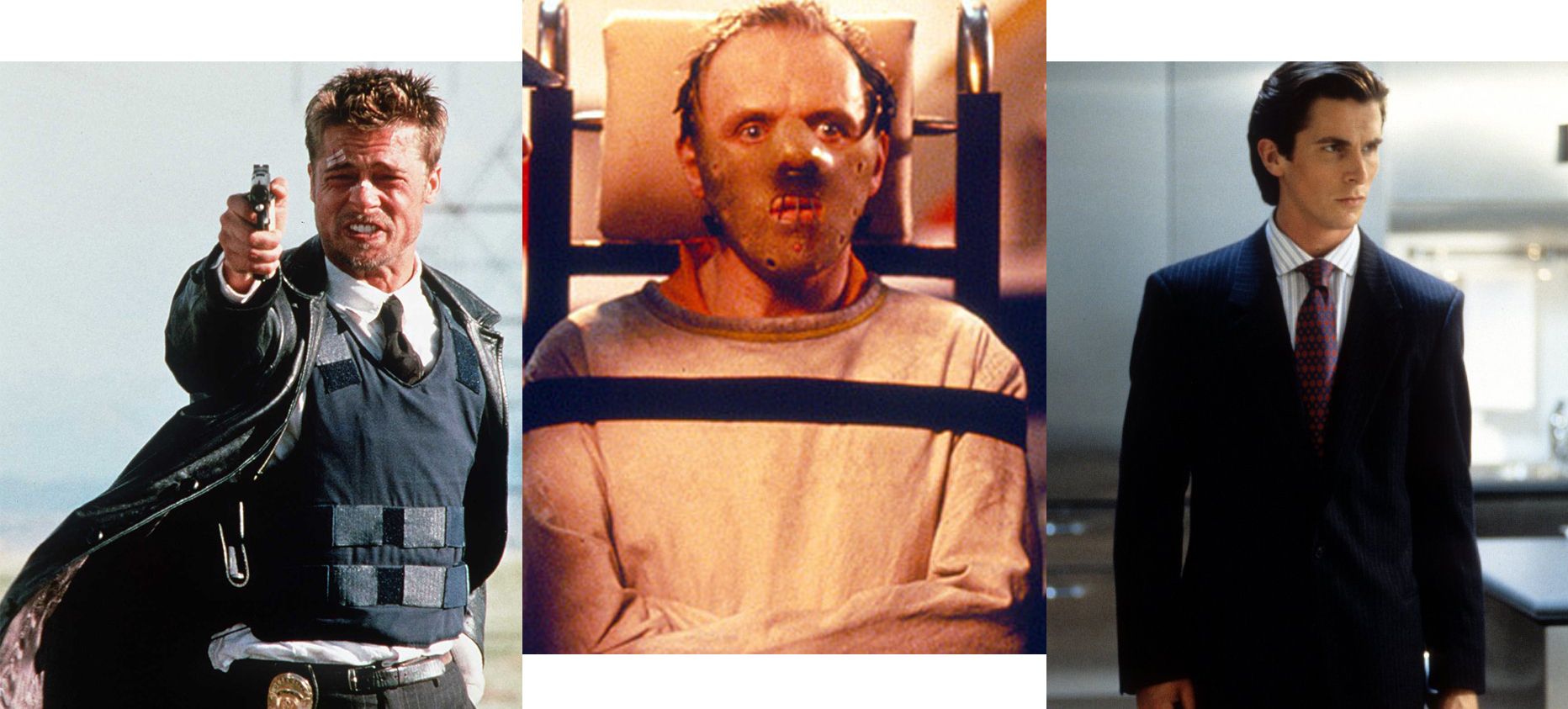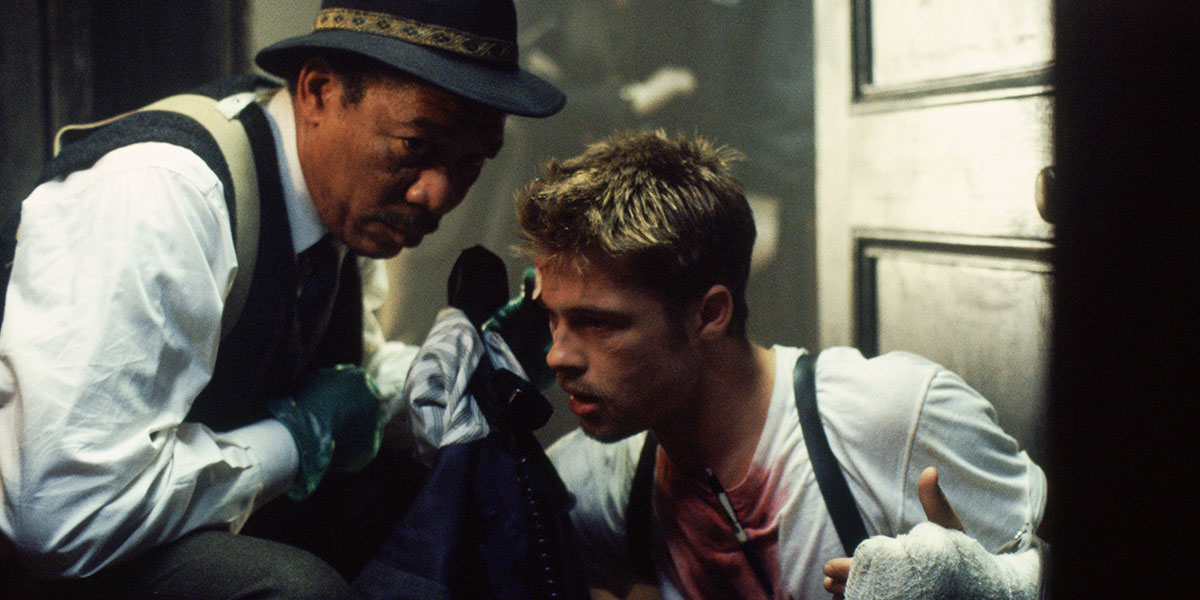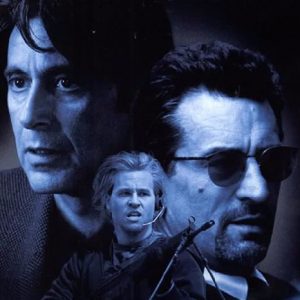By Christian Eltell
Written on November 5, 2017; Published on November 18, 2020

When I was a little boy, I was scared of horror pictures, especially vampire movies. The vampire film that really creeped me out was Neil Jordan’s Interview with the Vampire, starring Tom Cruise and Brad Pitt. The way Cruise’s Lestat lures Pitt’s Louis into his world of hell, and teaches him to become an immortal vampire, biting people’s necks and sucking blood from human flesh, was both fascinating and disturbing to me in terms of the subject matter. Francis Ford Coppola’s gothic take on Bram Stoker’s Dracula, with Gary Oldman as the title character, also frightened me with Dracula’s physical appearances and his lust for Mena, the woman he loves. Monster films, such as Kenneth Branagh’s version of Mary Shelley’s Frankenstein, gave us a horrific but misunderstood Robert De Niro as a creature who’s not supposed to exist, but displays some humanity underneath the monster, and wants to fall in love and be loved. Of course The Thing, Alien, and Predator redefined monstrous sci-fi horror mixed with great action and gruesomely awesome special effects. Tim Burton’s take on Icabod Crane and the Headless Horseman was the best version of Sleepy Hollow. American Psycho, while not necessarily a scary horror picture, is terrifying and bloody in terms of Christian Bale’s Patrick Bateman, who’s manic and self-obsessed with his masculinity over women. However, nothing scared me more than the serial killer films The Silence of the Lambs and Se7en.

Anthony Hopkins’s stunningly eerie performance as the cannibal, Hannibal Lector, is arguably the most terrifying on-screen villain of all time because he is depicted as an intelligent serial killer with enough knowledge, patience, and skill to outsmart anyone in his path. Hannibal gave me nightmares as a little boy, scarier than my dreams of vampires and monsters. The serial killer genre has been more thrilling to me than other horror films because villains like Hannibal Lector are gripping and psychological. There has been mindless non-stop violence and repeatedly brutal killings without purpose in slasher films like the Halloween series with Michael Myers, A Nightmare on Elm Street franchise with Freddy Kruger, and the overlong Friday the 13th series with Jason Voorhees. The Saw franchise also became heavy on senseless violence, but the first film in the series was effective in displaying its characters in a morality game, and trying to figure out the real identity of the killer known as Jigsaw. However, what sets serial killer films apart from other horror and slasher movies is that there is more focus and intrigue towards serial killer characters who attempt to convey a message through their crimes.
In The Silence of the Lambs, Hannibal Lector has one-on-one confrontations with F.B.I. trainee Clarice Starling from his jail cell. She questions him about another serial killer, Buffalo Bill, who is an expert in skinning female victims. Since Clarice wants to take Buffalo Bill down, Lector oddly acts as a useful guide for the young F.B.I. trainee who is entering dark territory. He understands other serial killers and how they think and act. Lector also turns the tables by interrogating Clarice. Whenever she wants information on Buffalo Bill, Hannibal wants something in return. Lector asks Clarice about her worst memory, which is the death of her father. He pushes her to tell him what happened to her father, and what she was feeling and experiencing during this horrific moment. When Clarice talks about her father and the screaming lambs, Lector feels her pain and suffering because he has also gone through horrific experiences, not only as a killer and cannibal, but also during his adolescence. He realizes that he and Clarice both have a lot in common due to their traumatizing endeavors. The relationship between Lector and Starling is one of the strangest because they are clearly two different people on opposing sides of the law. However, Lector appreciates Clarice’s toughness and persistence in her detective work, making her a strong female heroine. Clarice also realizes that without Lector, she would never find Buffalo Bill. Hannibal does have his gruesome moments, such as the prison break in which he eats a policeman’s face and cuts up another cop’s stomach. This scene is empowered by Hopkins’s menacing presence, graphic but well shot images, and Howard Shore’s haunting score. Hannibal Lector is a dangerous serial killer who has several dimensions to his psyche, including intelligence and power.

David Fincher’s Se7en is another example of a serial killer/crime thriller that makes other horror pictures look pale in comparison. What’s also unique about this film is that the killer’s physical appearance isn’t revealed until the third act, and we never know his true identity, only that he’s called John Doe. When I saw Se7en for the first time as a young boy, I was disgusted by all the graphic imagery in the film. However, as I saw the film more and more growing up, I appreciated the creativity and urgency behind the crime scenes. The killer’s motive was to punish those who violated any of the seven deadly sins. According to John Doe, the first victim was an obese man who commits gluttony. Another victim was a corrupt lawyer who commits greed by getting paid to keep criminals and rapists on the streets. John Doe’s reasoning for his crimes are that people who commit sin are guilty, not innocent, and should pay the consequences for their actions. The bulk of the film is based on the lead detectives portrayed by Morgan Freeman and Fincher regular Brad Pitt. These cops are complete opposites. Freeman is the older, wiser, more patient detective who is about to retire, but works hard to research John Doe’s crimes, and is committed to see the case through to the end. Pitt is the younger, ambitious but reckless detective who gets grossed out by dead bodies, gets impatient with others including photographers, and hates John Doe because of his gruesome crimes. Both detectives have different attitudes, but manage to work together to bring down a tough, complex killer. The setting is also a major character because the film takes place in a rainy city, with terrible conditions and crooked people, which is why John Doe commits murder. He hates the world because everyone commits sin every day, and no one does anything about it. John Doe’s crimes are an ugly reality, like Dante’s Inferno.
Serial killer films like The Silence of the Lambs and Se7en have redefined the horror genre because these movies are psychologically thrilling, scary, and suspenseful. Instead of watching Freddy, Jason, Michael, and other weak, one-dimensional villains with cheap scares and sharp weapons in slasher horror films, serial killers are three-dimensional characters that show evil, menace, and purpose, making them more intriguing villains. Serial killer characters are also well matched against smart detectives who learn to understand the reasons and motives behind the killer’s crimes. The best part is the puzzles and clues killers leave behind for the cops to contemplate over. We could use a few more serial killer films that make us think about major issues like morality and sin. We could also use films like this for lovers of crime thrillers like me.
